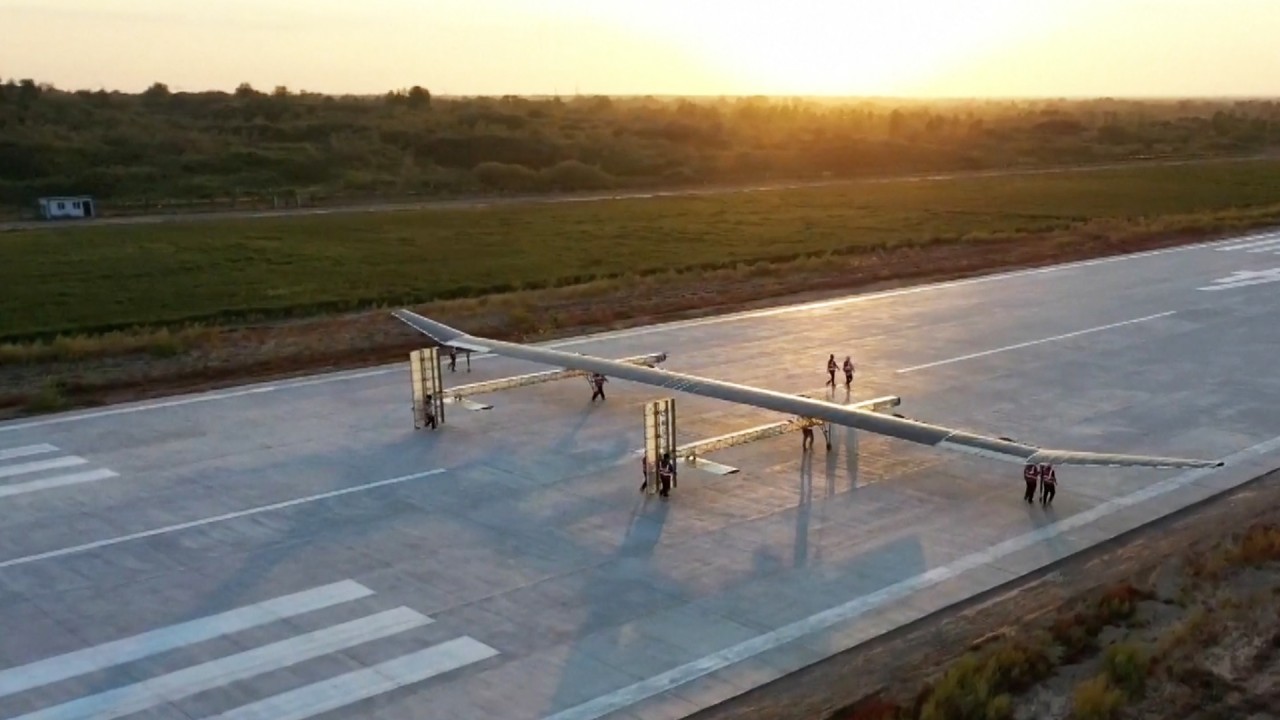
China’s biggest solar-powered drone completes first test flight
- Morning Star 50 took off from an airport in Shaanxi and landed 26 minutes later, according to state media
- Its chief designer says it will work as a ‘pseudo-satellite’ to carry out operations at altitudes above 20km
Morning Star 50 took off from an airport in Shaanxi province at 5.50pm on Saturday and landed 26 minutes later after a smooth flight, according to the official Science and Technology Daily.
The twin-fuselage drone has a 50-metre (164ft) wingspan and could have a range of uses – from high-altitude surveillance to forest fire monitoring and communications.
It is powered entirely by solar panels, which cover most of its wings, and will work as a “pseudo-satellite” to carry out operations at altitudes above 20km (65,600ft), chief designer Zhu Shengli told the newspaper.
Zhu, with the state-owned Aviation Industry Corporation of China, said the drone could remain airborne for months or even years. No further details of the drone were given.
Unmanned aerial vehicles like Morning Star 50 are much cheaper and more flexible to launch and operate than satellites.
Its development will strengthen China’s defences in space and at sea, and it could also be used in conjunction with key technologies in fields such as renewable energy, new materials and aeronautical engineering, according to the report.
Other countries are also seeking to develop similar drone technology. The solar-powered Zephyr S drone in August had spent 64 continuous days airborne before it crash-landed in Arizona. The 25-metre-wide, 75kg (165 pounds) drone was built by Airbus to help the United States military further its high-altitude operational goals.

Drones like Morning Star 50 and Zephyr S fly in the stratosphere – a layer in the Earth’s atmosphere where adverse weather can be avoided. The altitude is high enough for the drones to survey large areas on the ground while being close enough to send back data in real time.
More recently, China Aerospace Science and Technology Corporation last month tested its latest Rainbow-4 unmanned combat aircraft in a trial flight. Powered by a new type of heavy-fuel piston engine, the drone could be used for both military and civilian operations.
Aircraft makers in China are also trying to develop a telecommunications network based on unmanned aerial vehicles.


